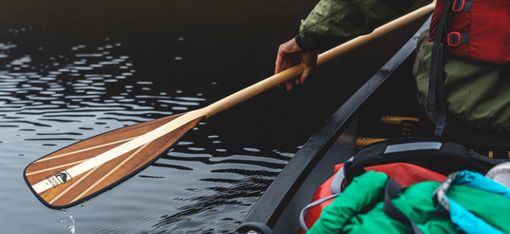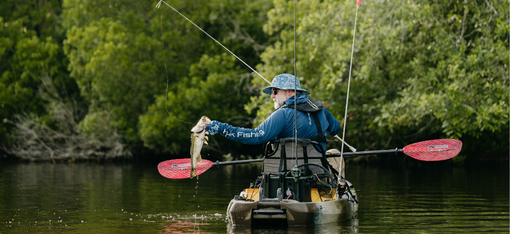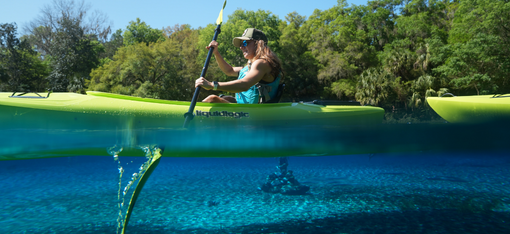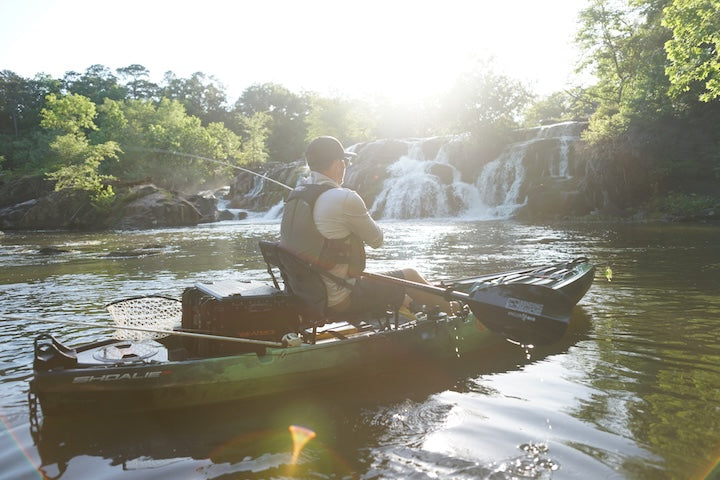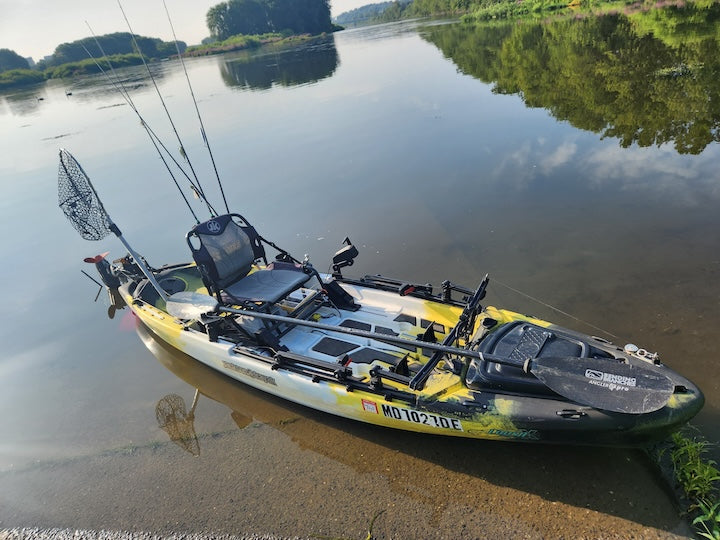Canoeing and Kayaking Safety in Stormy Weather
3-minute read
Let’s look at some of the weather hazards canoeists and kayakers may encounter, especially if you’re in remote or wilderness areas with no chance of getting to shelter.

Lightning can present a significant risk to paddlers (Photo courtesy of Ryan Phillips on Unsplash)
Lighting Safety
In general, the odds of being struck by lightning are very low. But since canoeing and kayaking bring you outside where the thunderstorms are and in the seasons when thunderstorms are most common, it’s important to learn basic lightning safety.
The best way to protect yourself from a thunderstorm is not to be in one! Know the forecast before heading out, especially if it’s a day trip and can be easily rescheduled. If you’ll be in a metal canoe, do not head out if there are thunderstorms in the forecast.
Here a few vital bits of information to remember if you’re outside during a thunderstorm:
- Thunder indicates lightning. If you can hear thunder, there’s a chance for a lightning strike near you, even if the thunder is 10 miles away.
- As soon as you hear thunder, start to take action. Water is an excellent conductor of electricity, so if you’re on the water get off as soon as you can, and away from any tall trees along the shoreline. If you’re at a campsite, start to look for the best spot to take shelter.
- Avoid any object made of metal or graphite like tent stakes and poles, metal or carbon paddles and camp stoves. A wet length of rope is an example of a long conductor, and isn’t safe either.
- Avoid high ground, open ground and tall, solitary trees. Don’t take shelter along a high rock wall, as lightning travels down vertical surfaces. If you’re with other people, spread out (sources recommend 50-100 feet apart). Look for low ground, a ravine or a clump of trees that are of similar height.
- Don’t lay down on the ground. Instead, crouch low with your feet together. Ground current contributes to half of lightning strike deaths. You want as little of yourself in contact with the ground as possible. Sitting will work, especially if you can sit on a foam pad, pack (with no metal) or pile of clothes.
- Don’t assume all is over until you haven’t heard thunder for about 30 minutes.
- It’s wise to look around you when you set up camp in the event a storm would roll through during the night. Have a plan for where to go for everyone in your group.
(Sources: NOLS, National Weather Service)
Safety in Wind and Waves
If you’re on a large body of water, winds above 12-15 mph are considering unsafe for canoeing or kayaking. So check the weather forecast before heading out. Sometimes, though, storms can come up suddenly. Or if you’re on a multi-day trip, the forecast may have changed since you left.
If you’re on the water and the weather turns on you, know your own skill level and experience with rough conditions. Know the skill level of others who are with you. It’s better to get to shore and wait out the wind then to capsize. For that reason, it’s always a good idea to paddle close to shore when possible in rough water and high winds, especially on large lakes.
It’s important to head into bigger waves at an angle. If you’re in a canoe, keep the weight of both gear and people as low in the boat as you can to help with stability. Of course, we assume you always wear your PFD when you paddle.

High winds need extra caution when wilderness canoe camping (Photo via Canva)
What if you’re at a wilderness campsite and high winds come up? Even without lightning these storms can be terrifying when trees are falling down around you. Steve Piragis, of Piragis Outdoors in Ely, Minnesota, was quoted in a 2016 article shortly after a big storm went through the Boundary Waters. He advised:
- Be wary of any dead trees near the campsite. They’ll go over first in a storm.
- These storms often occur at night. Be aware of possible shelters near your campsite before you turn in for the night. It may be best to leave your tent so you can move quickly if necessary.
- Some of the dangers in lightning storms can actually help you in a windstorm: large rocks, getting near the shoreline that’s facing the wind to avoid falling trees, taking shelter behind a large tree that’s already down.
Be Prepared for Adverse Weather
Anytime we’re outdoors, especially in the wilderness and especially on a multi-day trip, there’s the chance for adverse weather.
Important safety items to have along can include:
- Good rain gear along with clothing made of materials that dry quickly.
- A well-stocked First Aid Kit along with an emergency blanket for everyone in your party if hypothermia is any risk at all (cold water and/or cold temperatures).
- Water-and-windproof fire starter kit.
- If you’re well out of cell phone range, consider renting a satellite phone.
- If you love wilderness paddle trips, consider learning all you can about reading the clouds and other weather forecasting skills.
What paddle questions can we help you with today? Get in touch with our Wisconsin-based Customer Service Team: 715-755-3405 • [email protected]
More for you...




